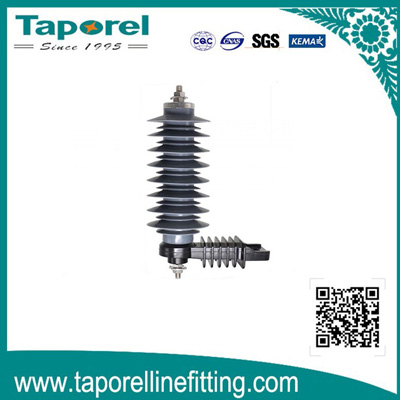A lightning arrester is a voltage-activated device that protects computers and other electronic equipment from surges or transient voltages in power or data cables, whether they are lightning or switching surges. Lightning arresters work by diverting additional voltage to the ground rather than flowing through electronic equipment while allowing normal voltage to continue along its path.
Not all lightning arresters protect systems from lightning strikes. Lightning arresters (Type 1) are used to protect against direct lightning surge currents, while lightning arresters (Type 2) are used to protect equipment from inductive surges in electrical wiring.
The purpose of a lightning arrester is to protect insulation/components from high DV/DT which peaks when the instantaneous value of the insulation or component breakdown is exceeded. Lightning strikes are one of the common causes of voltage surges. Another common cause is switching in inductive circuits.
The occurrence of voltage surges can be captured. Some lightning arresters are equipped with a "surge counter" that captures the fact that the arrester has been discharged. Other phenomena (sound measurements, light measurements, electric field measurements, etc.) can also be used to capture the occurrence of discharges. Meteorologists usually use ground and satellite instruments to capture and record lightning discharges.

Lightning Arrester
Voltage surges can also be captured and recorded, but here the technique becomes complex. A common problem is that voltage surges are essentially a high-frequency phenomenon and in order to capture and record (i.e. quantify) the event, the measurement system must have a high-frequency response. Instruments of the type normally used for fundamental frequency voltage measurements do not have sufficient frequency response to accurately capture and record high-frequency voltage transients. They may be able to capture the event, but it is not always possible to accurately quantify the event using these devices.
A lightning arrester is a device that protects an electrical system from damage caused by a lightning strike. A typical lightning arrester has both an earth terminal and a high voltage terminal. When a powerful surge propagates from the power system to the arrester, the high-voltage current is sent directly to the insulation or earth to avoid damaging the system.
When a powerful electrical surge or lightning strike strikes a specific electrical system, it damages the entire system as well as any electrical equipment connected to that system. Electrical equipment operates within a certain voltage range. When these devices receive voltages higher than those specified for operation, they can explode or be damaged. However, an electrical system protected by a lightning arrester is not damaged because the arrester ensures that high voltage does not enter the electrical system.
A lightning arrester does not absorb all the high voltage that passes through it. It simply diverts it to the ground or clamps it to minimize the voltage passing through it. The secret to a lightning arrester's success in diverting lightning or high surges is the MOV or metal oxide varistor, a semiconductor that is highly sensitive to voltage. At normal voltages, MOVs work as insulators and do not allow current to pass through them. At high voltages, however, the MOV acts as a conductor. It acts as a switch to open in the presence of standard AC voltage and as a switch to close in the presence of lightning or high voltage.
If you want to know more information about lightning arrester wholesale, welcome to contact us today or request a quote.
Taporel Electrical Insulation Technology Co., Ltd.
+86 29 8603 0621
No. 209 Jincheng Road, Jintan District, Changzhou City, Jiangsu Province, China
Copyright © Taporel Electrical Insulation Technology Co., Ltd. All Rights Reserved | Sitemap
